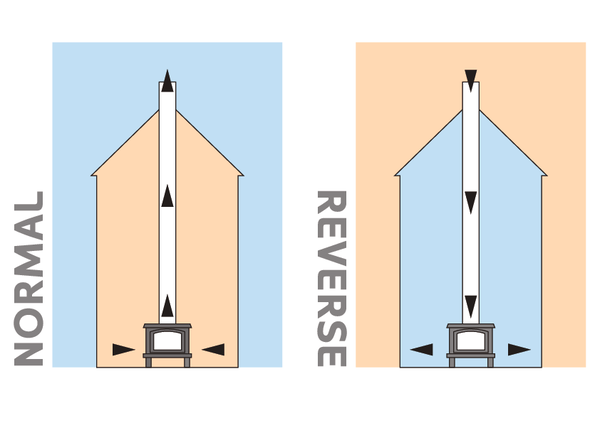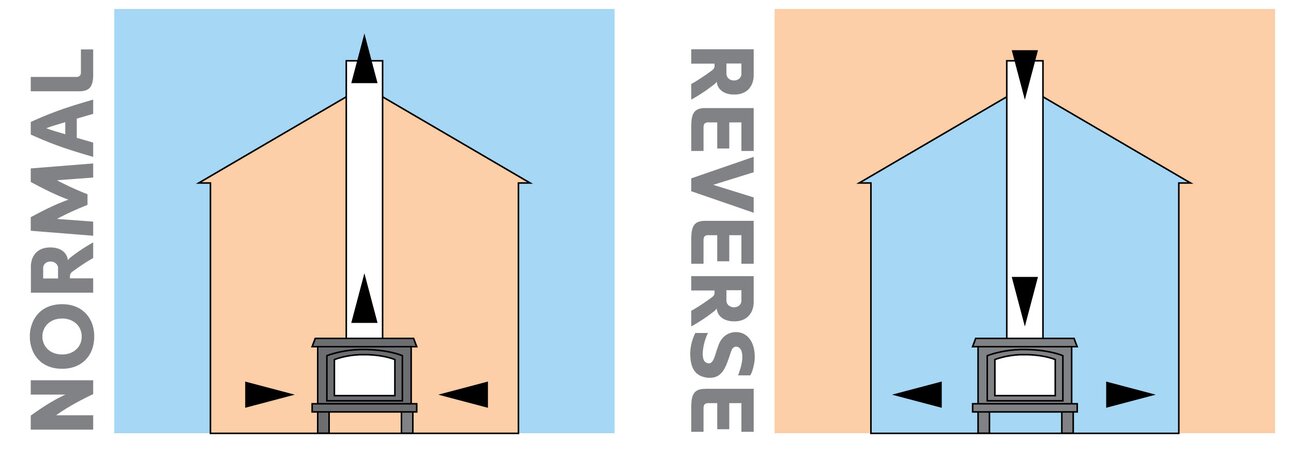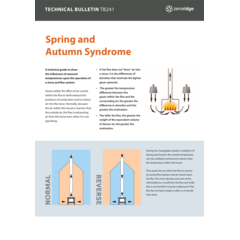A technical guide to show the influences of seasonal temperatures upon the operation of a stove and flue system.
Stoves utilize the effect of air current within the flue to both exhaust the products of combustion and to induce air into the stove. Normally, because the air within the house is warmer than the outside air, the flue is exhausting air from the stove even when it is not operating.
- A hot flue does not “draw” air into a stove, it is the differences of densities that motivate the lighter gases upwards.
- The greater the temperature difference between the gases within the flue and the surrounding air, the greater the difference in densities and the greater the motivation.
- The taller the flue, the greater the weight of the equivalent volume of denser air, the greater the motivation.

During the changeable weather conditions of Spring and Autumn the outside temperature can rise suddenly and become warmer than the temperature within the house.
This causes the air within the flue to reverse its normal flow pattern and air travels down the flue. The most obvious outcome of this will initially be a smell from the flue and while this is not harmful it may be unpleasant if the flue has not been swept as often as it should have been.
Because of the warmer outside temperature the house will feel colder than it actually is, and the desire to light the stove and at least match the outside temperature will reveal another problem, the stove will not light.
If sufficient air is coming down the flue the stove will appear to begin its lighting cycle but smoke will emanate from what are normally air inlets and into the room.
The stove may continue to operate in this fashion for a considerable time but because the flue is operating in reverse there is no possibility of any hot air produced by the stove travelling up the flue, to warm it, and reverse the flow.
If the house feels colder than the outside temperature do not light the stove without clarifying that the air is travelling up, rather than down, the flue.
As mentioned previously, a smell of soot is an indication that the flue is operating in the reverse but by opening the stove’s door and placing a hand within the stove it should be possible to confirm the air flow. Leaving the stove door open for a few minutes may allow enough air through the flue to warm its fabric sufficiently to at least stall the air flow which will make lighting possible.
If this fails, the practice of directing warm air from a hair dryer into the stove is a solution chosen by some, who report it to be effective. However, do not attempt this procedure unless the stove is scrupulously clean and free of all ash, dust and any other debris; the air flow from a hair dryer is surprisingly powerful.
We would recommend setting the stoves controls to the lighting position, putting two loosely crumpled pieces of newspaper onto the grate and lighting them. Leaving the main door a crack open, the thickness of your little finger, and letting the paper burn out. This produces very little smoke but enough heat to reverse the direction of the flue.


